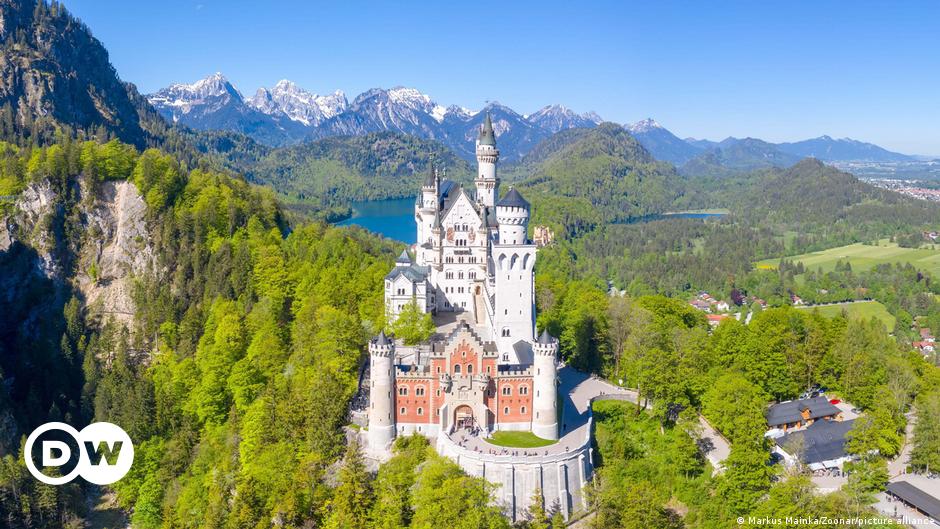Perched on a cliff in the Bavarian Alps near Füssen, Germany, the Neuschwanstein Castle is the epitome of the idyllic. Its spires soar to the heavens, while the surrounding landscapes are an invitation to daydreaming. It’s the stuff of fairytales, so much so that the man who had it built is dubbed the “fairytale king” — Ludwig II of Bavaria, who was born in 1845.
“Neuschwanstein is nestled in this Alpine landscape. Reminiscent of a theatrical setting, Ludwig II aimed to unite architecture, art and landscapes into a Gesamtkunstwerk — a complete artwork,” Alexander Wiesneth, of the Bavarian Palace Administration, told DW.
Just weeks after the mysterious death of Ludwig II in 1886, Neuschwanstein was opened to the public. It was an ironic twist of fate, as the king had it built as a private refuge for himself, desperately seeking solitude
Modeled as a medieval knight’s castle, inspiration for Neuschwanstein came during Ludwig II’s travels in 1867 to Wartburg Castle near Eisenach, Germany and to Chateau de Pierrefonds in France.
As the eccentric Ludwig II himself wrote to his revered friend, opera composer Richard Wagner, in May 1868:
“It is my intention to rebuild the old castle ruin […] near the Pöllat Gorge in the authentic style of the old German knights’ castles, and I must confess to you that I am looking forward very much to living there one day,” as the Bavarian Palace Administration
Construction of the “new castle” that was to include 200 rooms began in September 1869 and continued over decades, but was never fully completed.
The building melded various styles that included towers, chapels and arches, but also featured modern innovations like central heating, flushing toilets and a bell system to summon servants.
Neuschwanstein’s design was also dedicated to Wagner, whose operas “Tannhäuser,” “Lohengrin” and “Parsifal” profoundly influenced Ludwig.
The Singers’ Hall boasts gilded frameworks and frescoes depicting knights, courtly love and other legends of medieval times, like the Holy Grail. The ceiling features zodiac signs, while wall images show Parsifal’s son, the “Swan Knight” Lohengrin. Ludwig II himself had identified with such figures since his youth
Yet these majestic rooms, like the Throne Hall and the Ballroom — begging to be filled with illustrious guests and lavish parties — remained empty. In the end, the king simply wanted his peace.
With the construction of Neuschwanstein dragging on over many years, Ludwig himself only lived there briefly before his mysterious death at the age of 40 — officially ruled to be a suicide by drowning, a theory that has, however, been disputed.
Ludwig II’s lifeless body was discovered floating in Lake Starnberg, near Munich, along with the corpse of his physician, after the two had set out on an evening stroll in June 1886.
But it’s not just Neuschwanstein’s lavish, fairy-tale design that has made the castle famous.
Its role as a depot for Nazi-looted artworks during World War II has also made it rather infamous, as featured in George Clooney’s 2014 film “The Monuments Men.”



Also used as the cover photo for Blur’s Country House. Although as a mirror image.